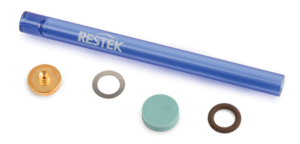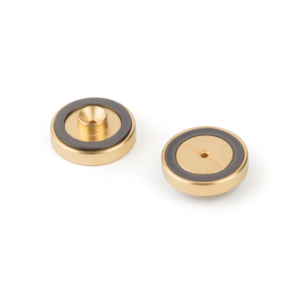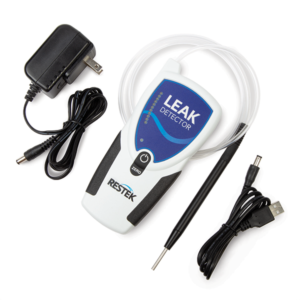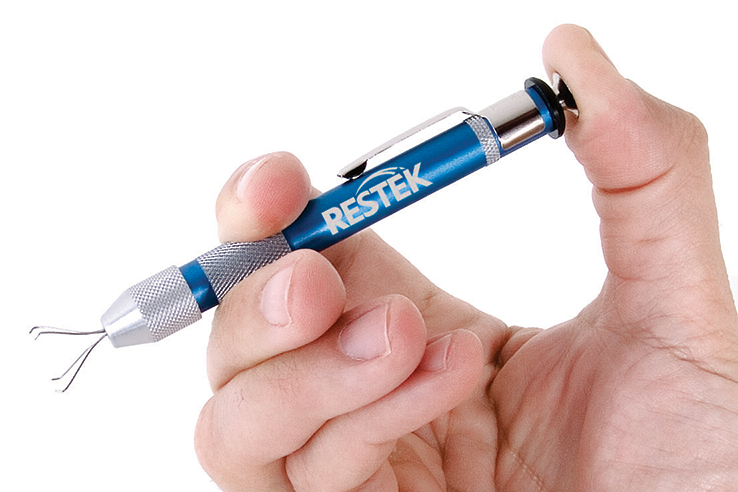GC Inlet Supplies and Maintenance for Optimum Performance
Restek’s Quick-Reference Guide
- Help ensure quality data by selecting the right GC inlet supplies
- Prevent unwanted downtime with a preventative GC inlet maintenance program
- Easily order the GC inlet supplies you need for your specific instrument
Liners, septa, inlet seals… when compared to your analytical column, your instrument, or a customer lost due to missed deadlines or inaccurate data, these small consumables carry an almost nonexistent price. And yet, the impact they can have on your analysis—not to mention your livelihood—is huge: breakdown of active compounds, loss in response, and other performance issues. In extreme cases, improperly selected or poorly maintained inlet supplies can mean the difference between detecting your compounds or not.
With Restek’s guidance and comprehensive line of high-quality GC inlet supplies, performing proper GC inlet maintenance to help maximize your lab’s uptime and ensure accurate, reproducible data is as easy as replacing a liner (and a few other items).
Selecting the Right GC Inlet Supplies
Using the wrong liner or septa can have just as negative an impact on your data as a fouled inlet. So, even if you
are a seasoned GC veteran, it pays to take the time to be sure that you are using the right GC inlet supplies
before worrying about how or when to perform GC inlet maintenance.
Inlet Liners
In gas chromatography, the inlet is the first part of the instrument that your sample comes in contact with. Using the right liner will aid in sample vaporization; promote efficient, loss-free analyte transfer; and protect your column from contamination—so choosing the correct GC inlet liner is critical for ensuring accurate and precise data. Liners differ in geometric configuration/design, volume, base material, deactivation, and packing. But, choosing the right liner can be greatly simplified by looking at the type of injection. Variations in sample and method may necessitate a different liner, but the following are great initial selections for any analysis:

- Split injection: Topaz Precision split liner with wool
- Splitless injection: Topaz single taper liner with wool
- Direct injection:
- For semivolatiles or compounds that could be affected by a tailing solvent peak: Topaz Uniliner liner with the hole drilled near the bottom
- For aqueous injections or compounds that elute away from the solvent peak: Topaz Uniliner liner with the hole drilled near the top
- Gas samples via sample loop injection: Topaz straight liner with a 1.0 mm ID
- PTV injection: Instrument-specific Topaz liner with a small inner diameter and at least one baffle or dimple
For more information about liner selection, visit www.restek.com/liner-choice
Septa
Choosing the right septum for your inlet is even easier. Restek offers several options that are designed to avoid septum bleed and coring, which can damage your column and your data:

- For temperatures up to 350 °C*: Thermolite Plus Septa
- For temperatures up to 400 °C*: Premium Non-Stick BTO Septa
- When coring is an issue (can create unwanted activity):
- Thermolite Plus or Premium Non-Stick BTO Septa with CenterGuide dimple
- Merlin Microseal Septa
For more information choosing the right septum for your analysis, visit www.restek.com/septum-choice.
*For 17 mm inlets, the maximum temperature for Thermolite Plus septa is 300 °C and the maximum temperature for BTO septa is 330 °C. For all injectors, minimum recommended operating temperature for BTO septa is 250 °C.
No More Burned Fingers!
Instead of reaching for a hot inlet liner or septa, reach for The Claw. This finger-saving tool lets you safely and cleanly remove liners, O-rings, and other hot objects from your inlet! Restek’s inlet liner removal tool is another option for easy and burn-free liner removal.
Inlet Seals
 Choosing the right inlet seal is more a matter of convenience and preference than data integrity.
Choosing the right inlet seal is more a matter of convenience and preference than data integrity.
As a general rule, especially for sensitive or splitless analyses, you want to avoid bare stainless steel and, instead, use highly inert gold-plated seals to reduce breakdown and adsorption of active compounds.
Restek offers several models of gold-plated inlet seals with washerless installation, including the customer favorite Dual Vespel Ring inlet seal. Its patented design features two soft Vespel rings—embedded in both the top and bottom surfaces—to help ensure a low-torque, leak-tight seal, even after repeated temperature cycles.
Which One to Choose…
Do you need additional assistance with selecting the right GC inlet supplies or with GC inlet maintenance? Contact Restek Technical Service or your local Restek representative.
Preventative GC Inlet Maintenace
Only after you have confirmed that you are using the right GC inlet supplies is it time to think about GC inlet maintenance. Even within a single industry there are simply too many variables in samples, injection techniques, instruments, detectors, etc., to be able to recommend a single general schedule to all analysts for replacing all liners, septa, and inlet seals. Your GC inlet maintenance schedule could be twice a day if you are running dirty samples, or once a year if you are using headspace GC. You need to determine your preventative maintenance (PM) schedule on an analysis-by-analysis basis.
When establishing a PM schedule specific to an analysis, the key term is “preventative.” You are trying to prevent unwanted downtime by replacing your inlet supplies before you have a problem. This way, you can plan for the downtime and choose a time that is not disruptive to your lab. You can also avoid lengthy troubleshooting sessions and missed deadlines.
Simply keep track of how long it generally takes after maintenance to begin seeing data problems commonly associated with the inlet, and then schedule your PM for that analysis and instrument to occur before data problems tend to arise.
Common data problems that can alert you to the need for GC inlet maintenance are:
- Loss of signal / loss of response
- Inlet activity
- Inlet discrimination
- Inlet leaks (e.g., seals around septa, O-rings, ferrules, etc.)
- Extraneous signal
- Contamination
- O-ring bleed
- Septum particles in the liner
- Matrix buildup in the liner (off-gassing)
- Contamination
- Inlet activity
- Analyte breakdown creating new compounds (extra peaks)
- Distorted signal / deteriorating peak shape (e.g., peak tailing)
- Inlet activity
- Inlet leaks (e.g., seals around septa, O-rings, ferrules, etc.)
- Inlet activity
Once you’ve set your preventative maintenance schedule, you will also want to plan ahead for the components you will be replacing and order your GC inlet supplies in advance. Restek’s chromatography experts recommend replacing septa, liners, O-rings, and inlet seals at the same time when you perform GC inlet maintenance. After all, you could unknowingly
have issues with multiple components, and the cost of each of these items is minimal compared to
having to take your instrument offline more often than needed.
Leak-Free is the Way to Be
 A high-quality leak detector—like the Restek Electronic Leak Detector—is a must for every GC lab. Every time you install a new column or perform GC inlet maintenance, be sure to leak-check your GC system before you condition or run an analysis. Minimizing the chances of damaging your column or detector will be well worth the time.
A high-quality leak detector—like the Restek Electronic Leak Detector—is a must for every GC lab. Every time you install a new column or perform GC inlet maintenance, be sure to leak-check your GC system before you condition or run an analysis. Minimizing the chances of damaging your column or detector will be well worth the time.
Peak Performance Ensured by Proper GC Inlet Supplies, Maintained Properly
Choosing the right GC inlet supplies—Restek Topaz liners, septa, inlet seals—and implementing a rigorous and timely preventative GC inlet maintenance schedule can help ensure optimum performance, maximum reproducibility, and minimized downtime for your lab.
The Restek inlet supplies you need to get you started can be found here or at www.restek.com/GCacc
Want More?
Sign up for the GSS Resources Newsletter, an eNewsletter that delivers new technology and news, straight to your inbox.

ISO 9001:2015 Certified
Copyright 2020, Government Scientific Source. All Rights Reserved.








